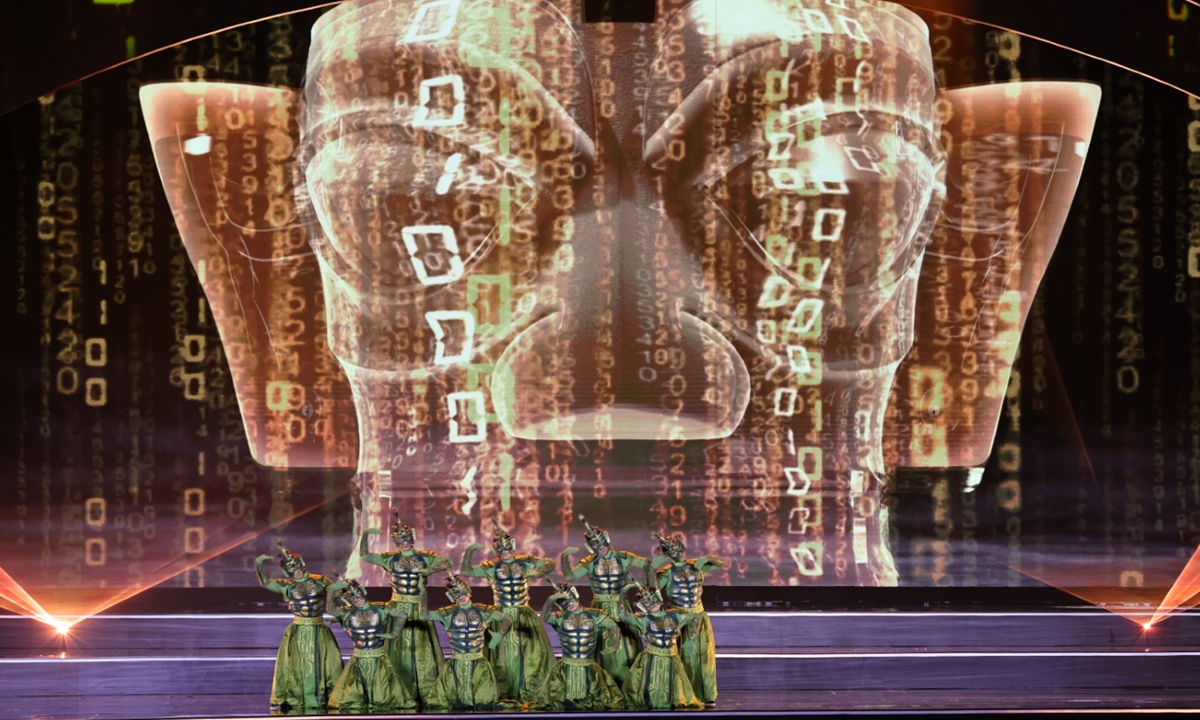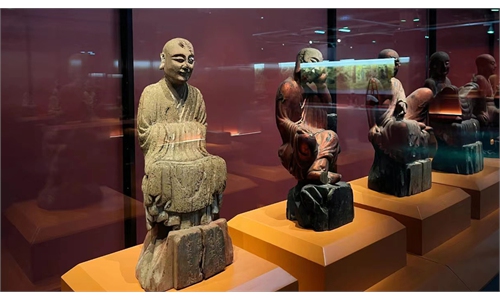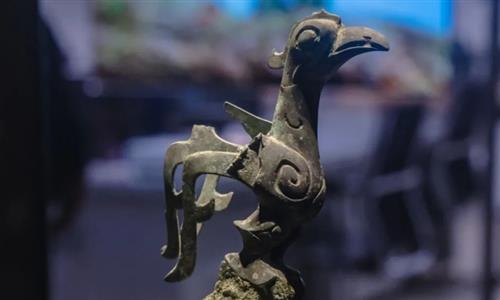ARTS / CULTURE & LEISURE
Notice calls for tech innovation in relics protection

Actors perform at the opening ceremony of the 81st World Science Fiction Convention, with a digital version of a golden mask, one of most famous cultural relics discovered at the Sanxingdui Ruins site, in the background, in Chengdu, Southwest China's Sichuan Province, on October 18, 2023. Chengdu is the second city in Asia and the first in China to host the convention, which is one of the most anticipated, longest-running and largest sci-fi events in the world.
Led by China's State Administration of Cultural Heritage, 13 departments recently issued a list of recommendations for better enhancing China's technological innovation in the field of cultural relics. According to cultural policy expert Song Weiping, the aim of the recommendations is to "establish a systematic operational manual in niche fields."
A total of 22 recommendations were included in the document. These were designed to address issues such as establishing a more integrated platform for technological innovation in the cultural relic field as well as "talent training" and "the establishment of more institutions."
Song told the Global Times that in the current status quo, research institutions that specialize in technological archaeology are "scattered" and their resources are "too singular and limited."
"Integrating such separated research resources is one way to strengthen China's overall power in this particular field," Song told the Global Times.
To address the issue of "talent training," two approaches were proposed in the document. The first is to design more major courses for the field at higher-education institutions across the country. The second is to improve the structure of the field by adding more flexibility to offer talents job positions at cultural heritage institutions.
The cultivation of talents with "interdisciplinary academic backgrounds" was stressed. Cultural expert Xu Shuming told the Global Times that interdisciplinary research methods are already common in many archaeological sub-subjects such as digital restoration and the conservation of immovable relics.
"The future of the conservation of cultural relics will link science subjects like computer science and chemistry even tighter. That's the reason of why we need more talents," Xu told the Global Times.
The November instruction has also indicated two goals. Within the next two years, a number of national and regional research institutes will be established as spots where local digital innovation resources can converge. For example, a research center that is dedicated to technological archaeology has already been established in Fudan University, Shanghai. The center covers research projects covering the Yangtze River delta area.
In 2035, a scientific and technological "innovation network" for cultural relics will be established. The network is a sharing platform that will enable scholars and researchers to "not only exchange views and skills, but also to effectively find partners for unique projects," archaeologist Yu Pei'er, told the Global Times.
"It sounds like a new cooperation mode free from traditional institutionalized teamwork, this sounds exciting," Yu said.
The trajectory of Chinese archaeological research has its continuity. The country has several major national-level projects such as one that seeks to trace the origin of Chinese agricultural history; human evolutionary theory in China as well as an ongoing project for tracing the origin of Chinese civilization. The new instruction highlights that these projects should better integrate the internet as a tool to "deliver China's archaeological achievements to the world."
Strengthening international cooperation was also recommended. It encourages Chinese talents to involve in a "comparative research of Chinese and world civilizations."
Besides the State Administration of Cultural Heritage, the other 13 departments that have joined the proposal include the Ministry of Culture and Tourism of China, the Ministry of Education and the Ministry of Science and Technology.



